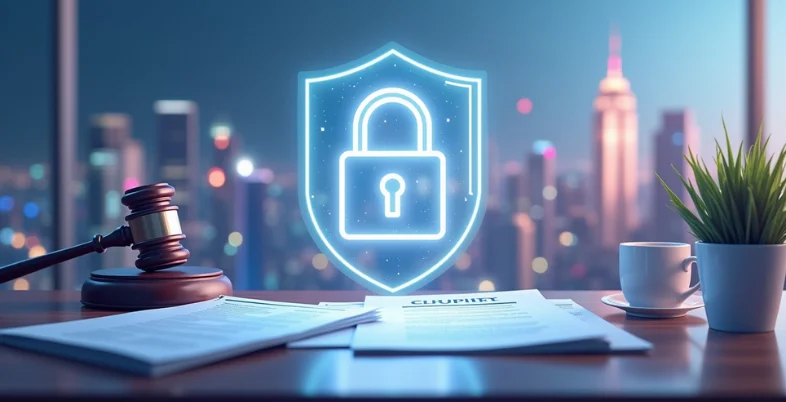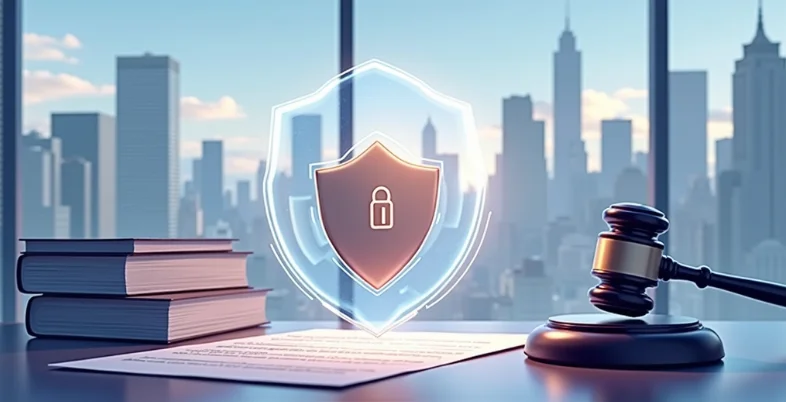How to Keep Your Business Legally Safe in 2025

Running a business used to be simpler. You sold things, paid your taxes, kept your books clean, and hoped nothing too wild happened. But things have changed. In 2025, the rules move faster than most business owners can track.
Laws are catching up with technology. Regulators are trying to keep companies honest. Customers care about how you store their data, treat your employees, and handle problems. Somewhere in the middle of all this, you’re just trying to keep your business legally safe while keeping the lights on.
Legal safety isn’t a luxury anymore. It’s part of survival. And not just for big corporations with a legal department down the hall. Small businesses, freelancers, startups — everyone’s in the same current.
So, what does “staying legally safe” actually mean right now?
Let’s start with the obvious.
Compliance Is Getting Real
Five or ten years ago, compliance felt like something only accountants or government contractors worried about. Now it’s everywhere. Data privacy laws. Labor laws. Environmental standards. They’ve tightened the screws.
If you collect customer information, even a simple email list, you’re subject to rules about how that data gets stored and used. If you employ people, you’re bound by evolving labor laws that vary by state or country. Failing to comply doesn’t just earn you a warning anymore. It earns you a fine that can sink a small business in one hit.
The smartest move is to treat compliance like a recurring appointment. Audit your own processes before someone else does. Keep your documentation neat and accessible. If you update your terms of service or policies, make sure your team actually understands them.
And don’t assume “it won’t happen to us.” That’s what every business says before something does.

The AI Headache (and Why You Can’t Ignore It)
Artificial intelligence is baked into almost every business tool now. Hiring software, email marketing platforms, customer service chatbots. They’re fast, they’re useful, and they’re also risky.
An algorithm that filters job candidates might unintentionally discriminate. A chatbot could give misleading advice. A design tool might use copyrighted material you don’t own. If any of that happens under your company’s name, you’re the one holding the bag.
So here’s the rule: don’t blindly trust automation. Keep humans in charge of the decisions that matter. Understand how your tools work and what data they use. Read the fine print when you sign up for AI platforms. Some vendors bury liability disclaimers deep in the terms, meaning if something goes wrong, it’s on you.
And yes, transparency counts. If you’re using AI to handle customer interactions, just say so. It builds trust and keeps you on the right side of emerging regulations.
Safety Isn’t Just About Hard Hats Anymore
Workplace safety used to be about slips, falls, and machinery. Now it’s also about burnout, mental health, and security when working from home.
A lot of companies moved to hybrid setups and never looked back. That flexibility helps, but it also brings new responsibilities. If your team works from home, you still owe them a safe environment. That includes proper equipment, ergonomic setups, and protection against data leaks.
Some companies ignore this part because it feels vague or hard to enforce. But the legal line is clear: if an employee gets injured doing their job, even at home, you could still be responsible.
Do yourself a favor. Write out a remote-work safety policy. Offer support for mental health. Make sure company laptops are secured and passwords are strong. A few hours spent tightening that up beats months of dealing with a preventable issue later.
Travel, Company Cars, and Liability Nobody Talks About
This one catches businesses off guard all the time. You’ve got a sales rep driving to meet a client. A delivery driver on the road. Maybe you lend a vehicle to an employee for a quick job. Something goes wrong. There’s a crash and someone gets hurt.
Who’s responsible? Often, it’s not just the driver. It’s the business.
That’s what’s known as vicarious liability. If an employee is driving for work, even if they’re using their own car, your company can still be pulled into the legal mess. And personal auto insurance doesn’t cover business activity in most cases.
To protect yourself, get proper commercial auto insurance. It costs more, but it’s cheaper than a lawsuit. Put driving rules in writing — who’s allowed to use vehicles, under what conditions, and what happens if there’s an accident. Keep the cars maintained and logged.
If an accident does happen, don’t try to figure it out on your own. Contact a car accident lawyer who understands these cases. They know how to handle the gray areas before they spiral.
Think of it as another layer of operational safety. You don’t want to be learning about liability law while your insurance company is calling.
The Contract Trap

Most business owners underestimate how much risk hides in bad contracts. Maybe you start working with a freelancer or a vendor and agree on things over email. It feels simple. Then something changes. The scope expands. The payment is late. Suddenly everyone remembers the deal differently.
That’s when you realize you should have put it in writing.
Every partnership should come with a clear contract. Spell out what’s being delivered, when, for how much, and what happens if things go off track. Include confidentiality clauses if you’re sharing sensitive information. Add a dispute resolution process so you’re not guessing later.
And don’t let old contracts sit untouched for years. Review them annually. Businesses evolve, and your agreements should evolve too.
Good contracts don’t just protect you in court. They protect relationships and keep people honest.
Building a Culture That Doesn’t Ignore Legal Basics
A legally safe business isn’t one that hides behind lawyers. It’s one where people know enough to avoid trouble in the first place.
You can’t expect your employees to memorize every regulation, but you can teach them to recognize red flags. Give your managers short, focused training sessions. Make it easy for staff to ask questions when something feels off. Keep an internal checklist for anything new — a new hire, a new client, a new product launch.
When people understand why rules exist, they stop seeing them as paperwork. They see them as guardrails that keep the whole thing from crashing.
And yes, reward people for doing it right. If someone catches a risk early or documents something properly, acknowledge it. Legal awareness should feel like part of professionalism, not paranoia.
Final Words
There’s a lot of talk about innovation and agility in business circles. Those are good things. But they only work when your foundation is solid. To truly succeed, you must keep your business legally safe. You can’t innovate your way out of a lawsuit.
Being legally safe means having systems that hold up under pressure. It means knowing where your weak spots are before someone else finds them. This isn’t something to fear. It’s something to practice. The same way you manage cash flow or marketing or customer service, you manage legal risk.
When you do that, you stop reacting and start anticipating. You don’t just survive changes in regulation or technology. You ride them with confidence. Because in the end, the businesses that last are the ones that know how to stay upright when the ground shifts beneath them.